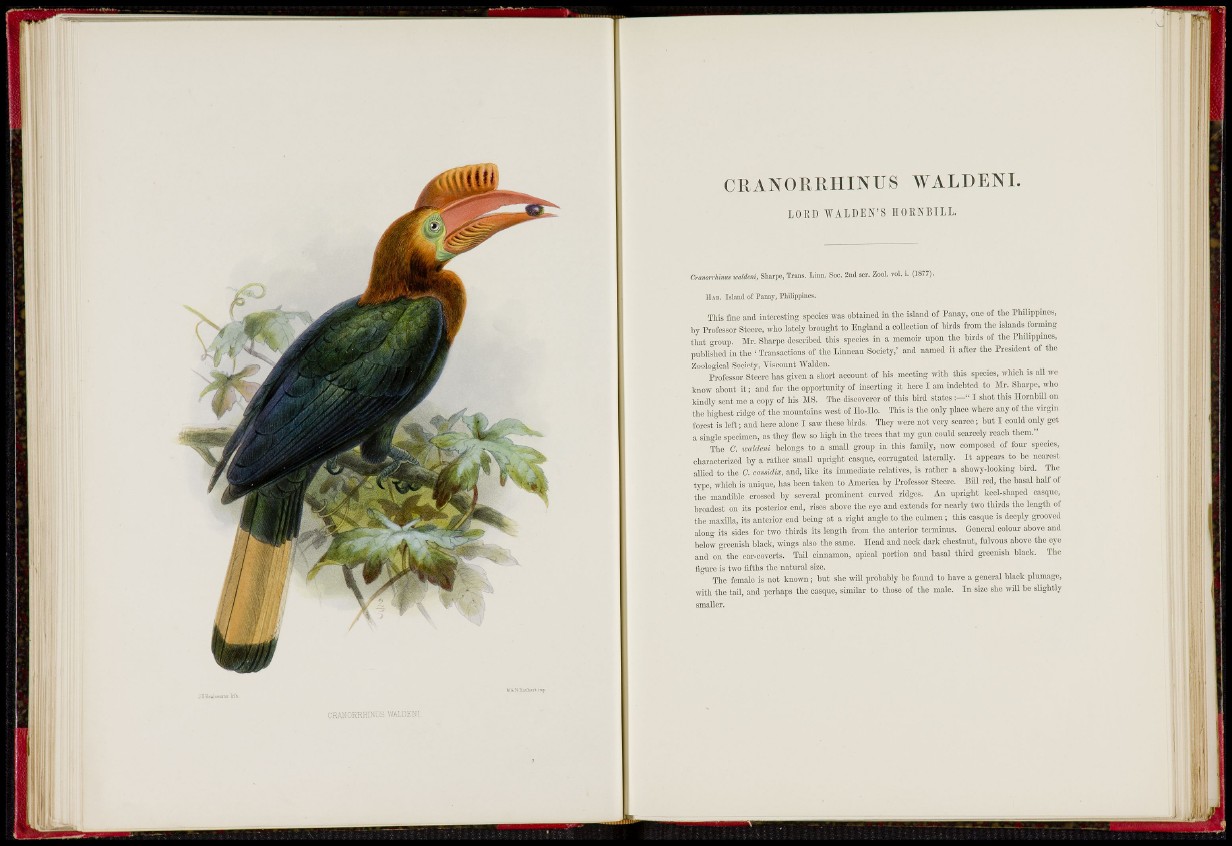
•J
CF_'::ORKHINUS VIALDEN!
CRANORIIIIINUS WALDENI.
l O E D WALDEN' S IIOENBILL.
CramrrUn^ waldeni, SLarpc, Trans. Linn. Soc. 2nd sur. Zool. vol. i. (1877).
IlAB. Island of Panay, I'liilippines.
This fino and interesting spccios was obtained in the island of Panay, one of the Hiilippines,
hy Professor Stecre, who lately brought to England a eollootion of hirds from the islands forming
that gronp Mr. Sharpo doscrihod this species in a memoir upon tiie birds of the Phdippmos,
published in the • Transactions of the Linnean Society,' and named it after the President of the
Zoological Society, Viscount "Walden.
Professor Stecre has given a short account of Ms mooting with this specics, which is all we
know about it; and for the opportunity of inserting it here I am indebted to Mr. Sharpe, who
kindly sent mo a copy of his MS. The discoTCrov of this bird states " I shot this Ifornbill on
the highest ridge of tho mountains west of Ilo-Ilo. This is the only placc where any of tlie virgin
forest °is left; and here alone I saw these bids. They were not very scarcc; but I could only got
a single spccimcn, as thoy flow so high in tho trees that my gun conld scarcely reach them."
The 0. wmldcm belongs to a small group in this family, now composed of four species,
characterized by a rather small upright casque, oormgatod laterally. It appears to bo nearest
allied to tlie 0. mmdix, and, like its immediate rolatiTOS, is rather a sliowy-looking bird. The
type, which is uniijuc, has been taken to America by Professor Stoero. Bill red, tho basal half of
tho mandible crossed by several prominent curvod ridges. An upright kccl-shaped casque,
broadest on its posterior end, rises above the eye and eitends tor nearly two thirds the length of
tho maxilla, its anterior end being at a right angle to tho oulmcn; this eisquc is deeply gtoovoj
alon^' its sides fcr two thirds its length from the anterior tcrmmus. General colour above and
below greenish black, wings also the same. Head and neck dark chestnut, fulvous above the eye
and on the ear-coverts. Tail cinnamon, apical portion and basal tlind greenish black. The
figure is two iifths the natural size.
The female is not known; but she will probably bo found to have a general black plumage,
with the tail, and perhaps the casque, similar to those of the male. In size she wiU be slightly
smaller.
' i i '
m